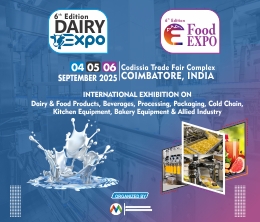Middle East Automotive Ceramics Market (2025-2031) | Outlook, Revenue, Share, Growth, Industry, Trends, Value, Analysis, Companies, Forecast & Size
Market Forecast by Countries (Saudi Arabia, UAE, Qatar, Kuwait, Oman, Bahrain and Turkey), By Material (Alumina Oxide Ceramic, Titanate Oxide Ceramic, Zirconia Oxide Ceramic), By Application (Automotive Engine Parts, Automotive Exhaust Systems, Automotive Electronics) And Competitive Landscape
| Product Code: ETC4618798 | Publication Date: Jul 2023 | Updated Date: May 2025 | Product Type: Report | |
| Publisher: 6Wresearch | No. of Pages: 200 | No. of Figures: 90 | No. of Tables: 300 | |
Middle East Automotive Ceramics Market Highlights
| Report Name | Middle East Automotive Ceramics Market |
| Forecast Period | 2025-2031 |
| Market Size | USD 3.06 billion by 2031 |
| CAGR |
5.4% |
| Growing Sector | Automotive |
Topics Covered in Middle East Automotive Ceramics Market Report
Middle East Automotive Ceramics Market report thoroughly covers the market by countries, by material and by application. The market report provides an unbiased and detailed analysis of the ongoing market trends, opportunities/high growth areas, and market drivers which would help the stakeholders to devise and align their market strategies according to the current and future market dynamics.
Middle East Automotive Ceramics Market Size Analysis
Middle East Automotive Ceramics Market was valued at USD 2.01 billion and is expected to reach USD 3.06 billion, growing at a CAGR of around 5.4% from 2025 to 2031. Ceramic materials are primarily used in engine components, catalytic converters, exhaust systems, and electronic applications due to their high strength, heat resistance, and durability. Countries such as the UAE, Saudi Arabia, and Turkey are among the significant contributors to the regional market growth.
Middle East Automotive Ceramics Market Synopsis
Middle East Automotive Ceramics Market is expected to witness significant growth in the coming years, due to the increasing demand for lightweight and fuel-efficient vehicles, coupled with stringent emission regulations, which has fuelled the adoption of automotive ceramics in the region. Ceramic components, such as engine parts, exhaust systems, and catalytic converters, offer exceptional thermal and mechanical properties, contributing to improved vehicle performance and reduced emissions. Apart from this, increasing focus on electric and hybrid vehicles further amplifies the demand for ceramics, as they play a crucial role in battery technologies and power electronics.
According to 6Wresearch, Middle East Automotive Ceramics Market size is expected to grow at a CAGR of 5.4% during 2025-2031. Several factors are driving the growth of Middle East Automotive Ceramics Market such as increasing environmental concerns and strict regulations on emissions, there is a growing demand for automotive components that enhance fuel efficiency and reduce emissions. Automotive ceramics, known for their excellent thermal and electrical properties, are being increasingly adopted to improve engine performance and fuel economy. Apart from this, shift towards electric vehicles (EVs) and the development of advanced battery technologies are driving the demand for automotive ceramics. Ceramics are integral to battery systems, offering improved charging capabilities, thermal stability, and longer lifespan, thus supporting the growth of the EV market.
However, Middle East Automotive Ceramics Market faces few restraints such as cost of automotive ceramics, including the manufacturing and installation processes, can be relatively higher compared to traditional materials. This cost factor may pose a challenge for widespread adoption, especially in price-sensitive markets. Apart from this, awareness about their applications and advantages may be limited among consumers and industry players. Additionally, the availability of specialized ceramic manufacturing facilities and skilled labour may be restricted, affecting the scalability of the market.
Middle East Automotive Ceramics Industry Trends
Middle East automotive ceramics market continues to evolve, several key trends are shaping the industry landscape. Understanding these trends is essential for industry players to stay informed and make informed business decisions. The increasing focus on sustainability and reducing carbon emissions has led to a surge in the demand for electric vehicles in the Middle East. Apart from this, effort to improve fuel efficiency and reduce vehicle weight, automotive manufacturers are increasingly turning to lightweight materials. Ceramic composites, known for their high strength-to-weight ratio, are finding applications in structural components, contributing to weight reduction and improved performance.
Investment Opportunities in Middle East Automotive Ceramics Market
Middle East Automotive Ceramics Market Industry presents a promising investment opportunity for businesses looking to expand their operations globally. With increasing emphasis on fuel efficiency and emission reduction, there is a growing demand for lightweight materials in the automotive sector. Automotive ceramics, known for their excellent strength-to-weight ratio, can be utilized in the manufacturing of lightweight components such as engine parts, pistons, and valves. Apart from this, Automotive ceramics play a crucial role in the manufacturing of batteries and power electronics for these vehicles. Investing in the research and development of ceramic materials specifically tailored for electric and hybrid vehicles can position companies for growth in this emerging market segment.
Leading Players in Middle East Automotive Ceramics Market
Key players in the market are CeramTec GmbH, Morgan Advanced Materials, 3M, Kyocera Corporation, CoorsTek. These companies are focusing on innovation, with products that enhance vehicle performance, fuel efficiency, and compliance with environmental regulations. Additionally, companies are increasingly leveraging ceramics' ability to reduce weight and improve the efficiency of electric and hybrid vehicles, which is especially relevant in the Middle East's growing automotive sector.
Government Regulations
Middle East Automotive Ceramics Market share is growing as government’s regulation and policies are helping in the extension of the market. Governments in the Middle East have launched various incentive programs to encourage investment in the automotive ceramics sector. These programs often offer tax incentives, subsidies, and grants for companies involved in research, development, and production of ceramic components for the automotive industry. Apart from this, governments in the region are focused on developing robust infrastructure to support the growth of the automotive ceramics market. This includes the construction of industrial zones, technology parks, and specialized manufacturing facilities equipped with state-of-the-art infrastructure and utilities.
Future Insights of Middle East Automotive Ceramics Market
The future of Middle East Automotive Ceramics Market looks promising due to significant advancements in automotive ceramics technology, including the development of advanced materials, coatings, and manufacturing techniques. These innovations aim to enhance the performance, durability, and efficiency of automotive components, meeting the evolving demands of the industry. Apart from this, fuel efficiency and sustainability are driving the demand for lightweight materials in the automotive industry. Automotive ceramics, known for their lightweight nature and excellent mechanical properties, offer a viable solution. They help reduce the weight of vehicles, resulting in improved fuel economy and reduced emissions.
Market Segmentation Analysis
The report offers a comprehensive study of the subsequent market segments and their leading categories.
Saudi Arabia to Dominate the Market- By Countries
According to Ravi Bhandari, Research Head, 6Wresearch, Saudi Arabia is expected to witness the most significant growth in the automotive ceramics market. The country's thriving automotive industry, combined with its strong focus on infrastructure development and investments, creates a conducive environment for the expansion of ceramic components and solutions.
Zirconia Oxide Ceramic to Dominate the Market-By Material
Zirconia Oxide Ceramic is expected to see an increase in usage in the future. Zirconia oxide ceramics possess exceptional properties such as high strength, toughness, and resistance to wear and corrosion. These properties make it an ideal material for demanding applications in the automotive industry, including engine components, bearings, and sensors.
Automotive Electronics to Dominate the Market By Application
Automotive electronics sector will experience the most significant growth. As vehicles become increasingly sophisticated and technology-driven, the demand for advanced electronic systems and components continues to rise.
Key Attractiveness of the Report
- 10 Years of Market Numbers.
- Historical Data Starting from 2021 to 2024.
- Base Year: 2024
- Forecast Data until 2031.
- Key Performance Indic
- Factors Impacting the Market.
- Major Upcoming Developments and Projects.
Key Highlights of the Report:
- Middle East Automotive Ceramics Market Outlook
- Market Size of Middle East Automotive Ceramics Market, 2024
- Forecast of Middle East Automotive Ceramics Market, 2031
- Historical Data and Forecast of Middle East Automotive Ceramics Revenues & Volume for the Period 2021 - 2031
- Middle East Automotive Ceramics Market Trend Evolution
- Middle East Automotive Ceramics Market Drivers and Challenges
- Middle East Automotive Ceramics Price Trends
- Middle East Automotive Ceramics Porter's Five Forces
- Middle East Automotive Ceramics Industry Life Cycle
- Historical Data and Forecast of Middle East Automotive Ceramics Market Revenues & Volume By Material for the Period 2021 - 2031
- Historical Data and Forecast of Middle East Automotive Ceramics Market Revenues & Volume By Alumina Oxide Ceramic for the Period 2021 - 2031
- Historical Data and Forecast of Middle East Automotive Ceramics Market Revenues & Volume By Titanate Oxide Ceramic for the Period 2021 - 2031
- Historical Data and Forecast of Middle East Automotive Ceramics Market Revenues & Volume By Zirconia Oxide Ceramic for the Period 2021 - 2031
- Historical Data and Forecast of Saudi Arabia Automotive Ceramics Market Revenues & Volume By Material for the Period 2021 - 2031
- Historical Data and Forecast of Saudi Arabia Automotive Ceramics Market Revenues & Volume By Alumina Oxide Ceramic for the Period 2021 - 2031
- Historical Data and Forecast of Saudi Arabia Automotive Ceramics Market Revenues & Volume By Titanate Oxide Ceramic for the Period 2021 - 2031
- Historical Data and Forecast of Saudi Arabia Automotive Ceramics Market Revenues & Volume By Zirconia Oxide Ceramic for the Period 2021 - 2031
- Historical Data and Forecast of UAE Automotive Ceramics Market Revenues & Volume By Material for the Period 2021 - 2031
- Historical Data and Forecast of UAE Automotive Ceramics Market Revenues & Volume By Alumina Oxide Ceramic for the Period 2021 - 2031
- Historical Data and Forecast of UAE Automotive Ceramics Market Revenues & Volume By Titanate Oxide Ceramic for the Period 2021 - 2031
- Historical Data and Forecast of UAE Automotive Ceramics Market Revenues & Volume By Zirconia Oxide Ceramic for the Period 2021 - 2031
- Historical Data and Forecast of Qatar Automotive Ceramics Market Revenues & Volume By Material for the Period 2021 - 2031
- Historical Data and Forecast of Qatar Automotive Ceramics Market Revenues & Volume By Alumina Oxide Ceramic for the Period 2021 - 2031
- Historical Data and Forecast of Qatar Automotive Ceramics Market Revenues & Volume By Titanate Oxide Ceramic for the Period 2021 - 2031
- Historical Data and Forecast of Qatar Automotive Ceramics Market Revenues & Volume By Zirconia Oxide Ceramic for the Period 2021 - 2031
- Historical Data and Forecast of Kuwait Automotive Ceramics Market Revenues & Volume By Material for the Period 2021 - 2031
- Historical Data and Forecast of Kuwait Automotive Ceramics Market Revenues & Volume By Alumina Oxide Ceramic for the Period 2021 - 2031
- Historical Data and Forecast of Kuwait Automotive Ceramics Market Revenues & Volume By Titanate Oxide Ceramic for the Period 2021 - 2031
- Historical Data and Forecast of Kuwait Automotive Ceramics Market Revenues & Volume By Zirconia Oxide Ceramic for the Period 2021 - 2031
- Historical Data and Forecast of Oman Automotive Ceramics Market Revenues & Volume By Material for the Period 2021 - 2031
- Historical Data and Forecast of Oman Automotive Ceramics Market Revenues & Volume By Alumina Oxide Ceramic for the Period 2021 - 2031
- Historical Data and Forecast of Oman Automotive Ceramics Market Revenues & Volume By Titanate Oxide Ceramic for the Period 2021 - 2031
- Historical Data and Forecast of Oman Automotive Ceramics Market Revenues & Volume By Zirconia Oxide Ceramic for the Period 2021 - 2031
- Historical Data and Forecast of Bahrain Automotive Ceramics Market Revenues & Volume By Material for the Period 2021 - 2031
- Historical Data and Forecast of Bahrain Automotive Ceramics Market Revenues & Volume By Alumina Oxide Ceramic for the Period 2021 - 2031
- Historical Data and Forecast of Bahrain Automotive Ceramics Market Revenues & Volume By Titanate Oxide Ceramic for the Period 2021 - 2031
- Historical Data and Forecast of Bahrain Automotive Ceramics Market Revenues & Volume By Zirconia Oxide Ceramic for the Period 2021 - 2031
- Historical Data and Forecast of Turkey Automotive Ceramics Market Revenues & Volume By Material for the Period 2021 - 2031
- Historical Data and Forecast of Turkey Automotive Ceramics Market Revenues & Volume By Alumina Oxide Ceramic for the Period 2021 - 2031
- Historical Data and Forecast of Turkey Automotive Ceramics Market Revenues & Volume By Titanate Oxide Ceramic for the Period 2021 - 2031
- Historical Data and Forecast of Turkey Automotive Ceramics Market Revenues & Volume By Zirconia Oxide Ceramic for the Period 2021 - 2031
- Historical Data and Forecast of Rest of Middle East Automotive Ceramics Market Revenues & Volume By Material for the Period 2021 - 2031
- Historical Data and Forecast of Rest of Middle East Automotive Ceramics Market Revenues & Volume By Alumina Oxide Ceramic for the Period 2021 - 2031
- Historical Data and Forecast of Rest of Middle East Automotive Ceramics Market Revenues & Volume By Titanate Oxide Ceramic for the Period 2021 - 2031
- Historical Data and Forecast of Rest of Middle East Automotive Ceramics Market Revenues & Volume By Zirconia Oxide Ceramic for the Period 2021 - 2031
- Historical Data and Forecast of Middle East Automotive Ceramics Market Revenues & Volume By Application for the Period 2021 - 2031
- Historical Data and Forecast of Middle East Automotive Ceramics Market Revenues & Volume By Automotive Engine Parts for the Period 2021 - 2031
- Historical Data and Forecast of Middle East Automotive Ceramics Market Revenues & Volume By Automotive Exhaust Systems for the Period 2021 - 2031
- Historical Data and Forecast of Middle East Automotive Ceramics Market Revenues & Volume By Automotive Electronics for the Period 2021 - 2031
- Historical Data and Forecast of Saudi Arabia Automotive Ceramics Market Revenues & Volume By Application for the Period 2021 - 2031
- Historical Data and Forecast of Saudi Arabia Automotive Ceramics Market Revenues & Volume By Automotive Engine Parts for the Period 2021 - 2031
- Historical Data and Forecast of Saudi Arabia Automotive Ceramics Market Revenues & Volume By Automotive Exhaust Systems for the Period 2021 - 2031
- Historical Data and Forecast of Saudi Arabia Automotive Ceramics Market Revenues & Volume By Automotive Electronics for the Period 2021 - 2031
- Historical Data and Forecast of UAE Automotive Ceramics Market Revenues & Volume By Application for the Period 2021 - 2031
- Historical Data and Forecast of UAE Automotive Ceramics Market Revenues & Volume By Automotive Engine Parts for the Period 2021 - 2031
- Historical Data and Forecast of UAE Automotive Ceramics Market Revenues & Volume By Automotive Exhaust Systems for the Period 2021 - 2031
- Historical Data and Forecast of UAE Automotive Ceramics Market Revenues & Volume By Automotive Electronics for the Period 2021 - 2031
- Historical Data and Forecast of Qatar Automotive Ceramics Market Revenues & Volume By Application for the Period 2021 - 2031
- Historical Data and Forecast of Qatar Automotive Ceramics Market Revenues & Volume By Automotive Engine Parts for the Period 2021 - 2031
- Historical Data and Forecast of Qatar Automotive Ceramics Market Revenues & Volume By Automotive Exhaust Systems for the Period 2021 - 2031
- Historical Data and Forecast of Qatar Automotive Ceramics Market Revenues & Volume By Automotive Electronics for the Period 2021 - 2031
- Historical Data and Forecast of Kuwait Automotive Ceramics Market Revenues & Volume By Application for the Period 2021 - 2031
- Historical Data and Forecast of Kuwait Automotive Ceramics Market Revenues & Volume By Automotive Engine Parts for the Period 2021 - 2031
- Historical Data and Forecast of Kuwait Automotive Ceramics Market Revenues & Volume By Automotive Exhaust Systems for the Period 2021 - 2031
- Historical Data and Forecast of Kuwait Automotive Ceramics Market Revenues & Volume By Automotive Electronics for the Period 2021 - 2031
- Historical Data and Forecast of Oman Automotive Ceramics Market Revenues & Volume By Application for the Period 2021 - 2031
- Historical Data and Forecast of Oman Automotive Ceramics Market Revenues & Volume By Automotive Engine Parts for the Period 2021 - 2031
- Historical Data and Forecast of Oman Automotive Ceramics Market Revenues & Volume By Automotive Exhaust Systems for the Period 2021 - 2031
- Historical Data and Forecast of Oman Automotive Ceramics Market Revenues & Volume By Automotive Electronics for the Period 2021 - 2031
- Historical Data and Forecast of Bahrain Automotive Ceramics Market Revenues & Volume By Application for the Period 2021 - 2031
- Historical Data and Forecast of Bahrain Automotive Ceramics Market Revenues & Volume By Automotive Engine Parts for the Period 2021 - 2031
- Historical Data and Forecast of Bahrain Automotive Ceramics Market Revenues & Volume By Automotive Exhaust Systems for the Period 2021 - 2031
- Historical Data and Forecast of Bahrain Automotive Ceramics Market Revenues & Volume By Automotive Electronics for the Period 2021 - 2031
- Historical Data and Forecast of Turkey Automotive Ceramics Market Revenues & Volume By Application for the Period 2021 - 2031
- Historical Data and Forecast of Turkey Automotive Ceramics Market Revenues & Volume By Automotive Engine Parts for the Period 2021 - 2031
- Historical Data and Forecast of Turkey Automotive Ceramics Market Revenues & Volume By Automotive Exhaust Systems for the Period 2021 - 2031
- Historical Data and Forecast of Turkey Automotive Ceramics Market Revenues & Volume By Automotive Electronics for the Period 2021 - 2031
- Historical Data and Forecast of Rest of Middle East Automotive Ceramics Market Revenues & Volume By Application for the Period 2021 - 2031
- Historical Data and Forecast of Rest of Middle East Automotive Ceramics Market Revenues & Volume By Automotive Engine Parts for the Period 2021 - 2031
- Historical Data and Forecast of Rest of Middle East Automotive Ceramics Market Revenues & Volume By Automotive Exhaust Systems for the Period 2021 - 2031
- Historical Data and Forecast of Rest of Middle East Automotive Ceramics Market Revenues & Volume By Automotive Electronics for the Period 2021 - 2031
- Middle East Automotive Ceramics Market - Key Performance Indicators
- Middle East Automotive Ceramics Market - Import Export Trade Statistics
- Middle East Automotive Ceramics Market - Opportunity Assessment By Countries
- Middle East Automotive Ceramics Market - Opportunity Assessment By Material
- Middle East Automotive Ceramics Market - Opportunity Assessment By Application
- Middle East Automotive Ceramics Market - Top Companies Market Share
- Middle East Automotive Ceramics Market - Top Companies Profiles
- Middle East Automotive Ceramics Market - Comparison of Players in Technical and Operating Parameters
- Middle East Automotive Ceramics Market - Strategic Recommendations
Market Covered
The market report has been segmented and sub segmented into the following categories:
By Countries
- Saudi Arabia
- UAE
- Qatar
- Kuwait
- Oman
- Bahrain
- Turkey
By Material
- Alumina Oxide Ceramic
- Titanate Oxide Ceramic
- Zirconia Oxide Ceramic
By Application
- Automotive Engine Parts
- Automotive Exhaust Systems
- Automotive Electronics
Middle East Automotive Ceramics Market (2025-2031) : FAQs
|
1 Executive Summary |
|
2 Introduction |
|
2.1 Key Highlights of the Report |
|
2.2 Report Description |
|
2.3 Market Scope & Segmentation |
|
2.4 Research Methodology |
|
2.5 Assumptions |
|
3 Middle East Automotive Ceramics Market Overview |
|
3.1 Middle East Regional Macro Economic Indicators |
|
3.2 Middle East Automotive Ceramics Market Revenues & Volume, 2021 & 2031F |
|
3.3 Middle East Automotive Ceramics Market - Industry Life Cycle |
|
3.4 Middle East Automotive Ceramics Market - Porter's Five Forces |
|
3.5 Middle East Automotive Ceramics Market Revenues & Volume Share, By Countries, 2021 & 2031F |
|
3.6 Middle East Automotive Ceramics Market Revenues & Volume Share, By Material, 2021 & 2031F |
|
3.7 Middle East Automotive Ceramics Market Revenues & Volume Share, By Application, 2021 & 2031F |
|
4 Middle East Automotive Ceramics Market Dynamics |
|
4.1 Impact Analysis |
|
4.2 Market Drivers |
|
4.3 Market Restraints |
|
5 Middle East Automotive Ceramics Market Trends |
|
6 Saudi Arabia Automotive Ceramics Market, 2021 - 2031 |
|
6.1.1 Saudi Arabia Automotive Ceramics Market, Revenues & Volume, By Material, 2021 - 2031 |
|
6.1.2 Saudi Arabia Automotive Ceramics Market, Revenues & Volume, By Application, 2021 - 2031 |
|
7 UAE Automotive Ceramics Market, 2021 - 2031 |
|
7.1 UAE Automotive Ceramics Market, Revenues & Volume, By Material, 2021 - 2031 |
|
7.2 UAE Automotive Ceramics Market, Revenues & Volume, By Application, 2021 - 2031 |
|
8 Qatar Automotive Ceramics Market, 2021 - 2031 |
|
8.1 Qatar Automotive Ceramics Market, Revenues & Volume, By Material, 2021 - 2031 |
|
8.2 Qatar Automotive Ceramics Market, Revenues & Volume, By Application, 2021 - 2031 |
|
9 Kuwait Automotive Ceramics Market, 2021 - 2031 |
|
9.1 Kuwait Automotive Ceramics Market, Revenues & Volume, By Material, 2021 - 2031 |
|
9.2 Kuwait Automotive Ceramics Market, Revenues & Volume, By Application, 2021 - 2031 |
|
10 Oman Automotive Ceramics Market, 2021 - 2031 |
|
10.1 Oman Automotive Ceramics Market, Revenues & Volume, By Material, 2021 - 2031 |
|
10.2 Oman Automotive Ceramics Market, Revenues & Volume, By Application, 2021 - 2031 |
|
11 Bahrain Automotive Ceramics Market, 2021 - 2031 |
|
11.1 Bahrain Automotive Ceramics Market, Revenues & Volume, By Material, 2021 - 2031 |
|
11.2 Bahrain Automotive Ceramics Market, Revenues & Volume, By Application, 2021 - 2031 |
|
12 Turkey Automotive Ceramics Market, 2021 - 2031 |
|
12.1 Turkey Automotive Ceramics Market, Revenues & Volume, By Material, 2021 - 2031 |
|
12.2 Turkey Automotive Ceramics Market, Revenues & Volume, By Application, 2021 - 2031 |
|
13 Rest of Middle East Automotive Ceramics Market, 2021 - 2031 |
|
13.1 Rest of Middle East Automotive Ceramics Market, Revenues & Volume, By Material, 2021 - 2031 |
|
13.2 Rest of Middle East Automotive Ceramics Market, Revenues & Volume, By Application, 2021 - 2031 |
|
14 Middle East Automotive Ceramics Market Key Performance Indicators |
|
15 Middle East Automotive Ceramics Market - Opportunity Assessment |
|
15.1 Middle East Automotive Ceramics Market Opportunity Assessment, By Countries, 2021 & 2031F |
|
15.2 Middle East Automotive Ceramics Market Opportunity Assessment, By Material, 2021 & 2031F |
|
15.3 Middle East Automotive Ceramics Market Opportunity Assessment, By Application, 2021 & 2031F |
|
16 Middle East Automotive Ceramics Market - Competitive Landscape |
|
16.1 Middle East Automotive Ceramics Market Revenue Share, By Companies, 2024 |
|
16.2 Middle East Automotive Ceramics Market Competitive Benchmarking, By Operating and Technical Parameters |
|
17 Company Profiles |
|
18 Recommendations |
|
19 Disclaimer |
- Single User License$ 4,560
- Department License$ 5,055
- Site License$ 5,595
- Global License$ 6,000
Search
Related Reports
- Middle East OLED Market (2025-2031) | Outlook, Forecast, Revenue, Growth, Companies, Analysis, Industry, Share, Trends, Value & Size
- Iran Portable Fire Extinguisher Market (2025-2031) | Value, Forecast, Companies, Industry, Analysis, Trends, Growth, Revenue, Size & Share
- Philippines Animal Feed Market (2025-2031) | Companies, industry, Size, Share, Revenue, Analysis, Forecast, Growth, Outlook
- India Lingerie Market (2025-2031) | Companies, Growth, Forecast, Outlook, Size, Value, Revenue, Share, Trends, Analysis & Industry
- India Smoke Detector Market (2025-2031) | Trends, Share, Analysis, Revenue, Companies, Industry, Forecast, Size, Growth & Value
- Kenya Road Stabilization Equipment Market (2025-2031) | Industry, Size, Growth, Revenue, Value, Companies, Forecast, Analysis, Share & Trends
- North America Sodium chloride Market (2025-2031) | Analysis, Revenue, Forecast, Trends, Companies, Size, Growth, Share, Industry, Outlook & Value
- North America Vinyl Flooring Market (2025-2031) | Value, Growth,Size, Analysis, Revenue, Industry, Forecast, Share, Outlook, Companies & Trends
- Tajikistan Thermal Camera Market (2025-2031) | Trends, Size, Growth, Share, Industry, Companies, Value, Analysis, Revenue, Forecast & Outlook
- Singapore Professional AV Market (2025-2031) | Industry, Size, Growth, Revenue, Value, Companies, Forecast, Analysis, Share & Trends
Industry Events and Analyst Meet
Our Clients
Whitepaper
- Middle East & Africa Commercial Security Market Click here to view more.
- Middle East & Africa Fire Safety Systems & Equipment Market Click here to view more.
- GCC Drone Market Click here to view more.
- Middle East Lighting Fixture Market Click here to view more.
- GCC Physical & Perimeter Security Market Click here to view more.
6WResearch In News
- Doha a strategic location for EV manufacturing hub: IPA Qatar
- Demand for luxury TVs surging in the GCC, says Samsung
- Empowering Growth: The Thriving Journey of Bangladesh’s Cable Industry
- Demand for luxury TVs surging in the GCC, says Samsung
- Video call with a traditional healer? Once unthinkable, it’s now common in South Africa
- Intelligent Buildings To Smooth GCC’s Path To Net Zero













